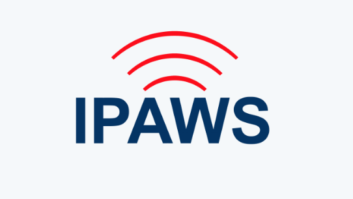
FEMA, working with several state broadcast associations, is planning a New England regional IPAWS test on Sept. 16 involving participants in Connecticut, Maine, Massachusetts, New Hampshire, Rhode Island and Vermont. It conducted a preparatory technical webinar this month for stations, and plans another.
We asked Al Kenyon for a summary. He is IPAWS National Test Technical Lead in the IPAWS Program Office of National Continuity Programs at FEMA.
Radio World: For radio station engineers and managers who couldn’t attend, what’s the key takeaway discussed in Wednesday’s technical webinar about the upcoming New England regional IPAWs test?
Kenyon: The test will sound and appear to be very similar to a Required Monthly Test so it should not cause any alarm among listeners/viewers. This is an opportunity to see how station equipment will respond to an NPT message in a no-fault environment. I highly encourage all stations to participate especially those with digital sub-channels.
RW: What should New England radio stations do between now and Sept. 16?
Kenyon: To participate in the test stations will need to configure their EAS devices to respond to an incoming message that contains both the PEP (Primary Entry Point) origination code and the NPT (National Periodic Test) event code. The FEMA IPAWS office has step-by-step configuration instructions available in PDF form for all currently available EAS devices.
RW: Are local radio and TV stations required to participate in the September test?
Kenyon: No, station participation is absolutely voluntary. There is no penalty for not participating, nor will there be a penalty for those stations that choose to participate and experience some sort of glitch or equipment failure.
RW: How much setup or modification to its EAS gear is required for a typical radio station?
Kenyon: Depending on the EAS device, station personnel may need to access the device via the front panel or via PC to adjust what some vendors describe as “filters” for incoming alerts. For operators not familiar with configuring their EAS, the procedure may take about a half an hour. Operators familiar with their EAS device programming interface should be able to enter the required changes in considerably less time.
RW: You’ve said the goal of these regional tests is to “evaluate how messages are distributed and propagated throughout the system, and identify areas for improvement.” How do you make those assessments, using what information or data?
Kenyon: We field monitoring teams equipped with systems capable of capturing multiple audio and video files from multiple radio and off-air television tuners. Later we analyze the captured files for audio quality, header data and video display characteristics. When we discover something out of the ordinary or at odds with recommended EAS procedure we often contact the technical staff of the monitored station to help us understand what went wrong.
RW: A longer-term goal is to prepare for another nationwide IPAWS test. What kind of timeframe are we looking at for that?
Kenyon: We anticipate conducting a nationwide IPAWS test shortly after the changes outlined in the FCC’s Sixth Report and Order on EAS go into effect.
RW: Can readers watch the archived version of the webinar?
Kenyon: Yes, if they are sufficiently masochistic to be willing subject themselves to it. [Watch here.]
RW: You plan another webinar soon. When is it? Is the subject matter different?
Kenyon: The next webinar is scheduled for Thursday, Sept. 3 at 10 a.m. EDT. I hope that we can improve the production values of the presentation, but other than that the material presented will be the same. We offer two webinars on different days of the week and different day parts in an effort to accommodate different schedules.












